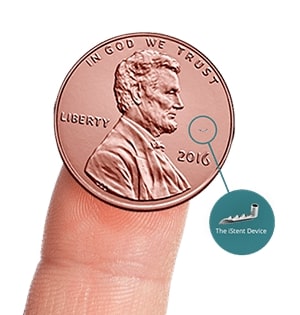A New Way To Reduce Elevated Eye Pressure Caused By Glaucoma
Glaucoma is a progressive eye disease that affects over two million Americans, half of which are unaware they have it, and a major cause of blindness. But although incurable, glaucoma caught in its early stages can be managed and its potential damage to vision minimized.
For many, glaucoma management includes daily medicated eyedrops to reduce eye fluid pressure (intraocular pressure). Although effective, some patients find eyedrops to be inconvenient and – depending on insurance coverage – costly.
DURYSTA™ is a new alternative to eyedrops. A biodegradable implant that automatically releases pressure-reducing medication into the eyes, DURYSTA™ helps glaucoma patients maintain normal intraocular pressure without the daily application of eyedrops.
Hattiesburg Eye Clinic’s fellowship trained glaucoma specialist, Dr. Adam Quinn, was the first eye surgeon in Mississippi to provide a patient with the new DURYSTA™ implants.
How Does Glaucoma Affect Intraocular Pressure?
Intraocular fluid is a watery substance that nourishes and cleanses the eye. The body constantly replenishes it as older used fluid drains out of the eye into the bloodstream through a passageway known as the trabecular meshwork.
But the trabecular meshwork can become blocked in patients with open angle glaucoma, the most common form of the disease, which can then impede fluid drainage. With nowhere for excess fluid to go, the fluid pressure in the eye (intraocular pressure) increases. Over time, elevated intraocular pressure can damage the optic nerve and cause permanent vision loss or blindness.
A patient may not feel this increased pressure, but a routine eye exam can detect it. If caught early, a common treatment strategy is to reduce the pressure with medication, usually through daily eyedrops applied by the patient.
Durysta™: Hattiesburg Eye’s New Alternative To Eyedrops
As an alternative to daily eyedrops, a tiny DURYSTA™ implant (smaller than the letter “I” in LIBERTY on a U.S. dime) imbedded in the eye slowly releases a powerful pressure-reducing drug automatically as it gradually dissolves. During clinical trials, patients with DURYSTA™ implants experienced effective pressure control for several months and sometimes years.
Patients receive the DURYSTA™ implants during a procedure in which a trained physician imbeds an implant in the anterior (front) chamber of each eye. Aside from regular pressure monitoring by their physician, most patients can then return to normal activities without the need for daily eyedrops.

During clinical trials, DURYSTA™ demonstrated effective pressure reduction for no less than 15 weeks. A significant number of participants, though, realized pressure reduction for nine to twelve months, and a quarter of those for one to two years.
Contact Us Today About Durysta™
At present, the U.S. Food and Drug Administration (FDA) has approved a one-time use of a DURYSTA™ implant for each eye. Once the implants stop reducing pressure effectively, providers must turn to other pressure reduction methods. There are, however, ongoing trials testing the safety and effectiveness of placing subsequent implants in a patient.
Hattiesburg Eye Clinic now offers this exciting new way to manage intraocular pressure for patients who qualify for the treatment. To learn if you might benefit from DURYSTA™ implants, contact us to schedule a consultation.
Ask Hattiesburg Eye Clinic About Durysta™!
To learn more about DURYSTA™ and whether the treatment is right for you, be sure to schedule a personalized consultation with one of our top doctors today. Call us toll-free at 800-624-8254 or fill out the appointment request form in our contact page. Our practice serves patients in Hattiesburg and the surrounding areas of Mississippi.



